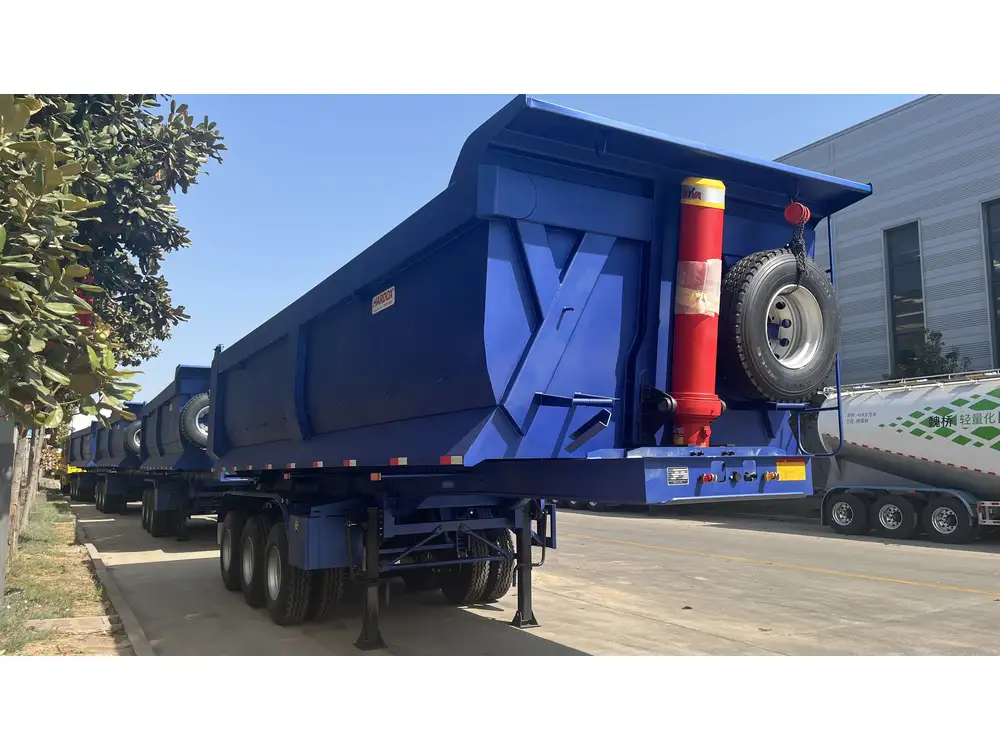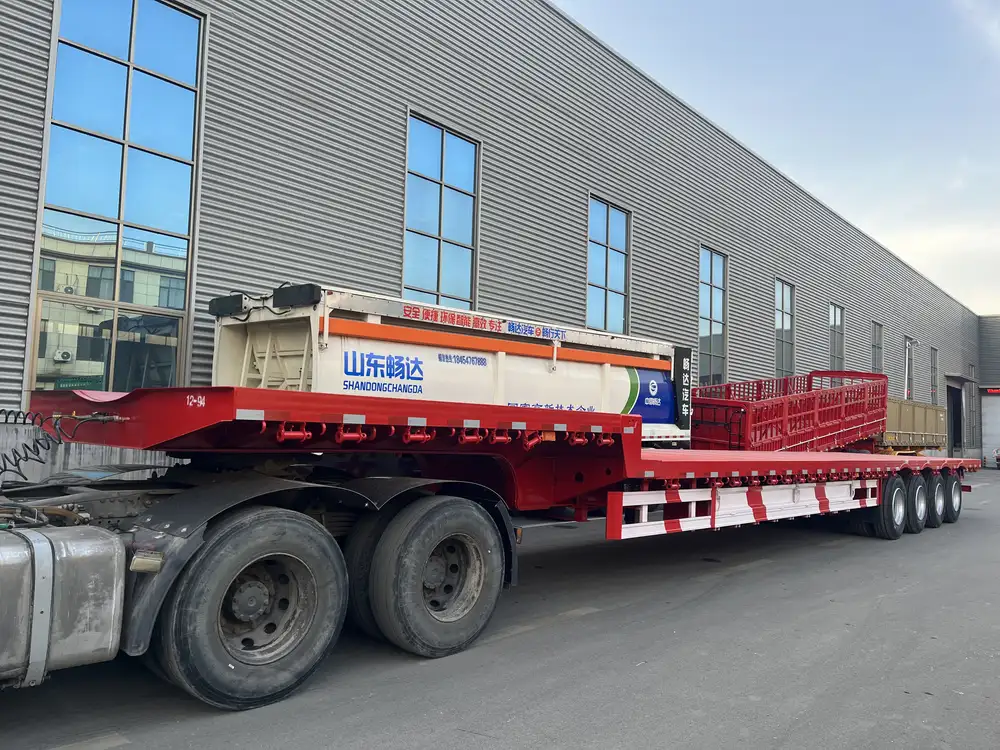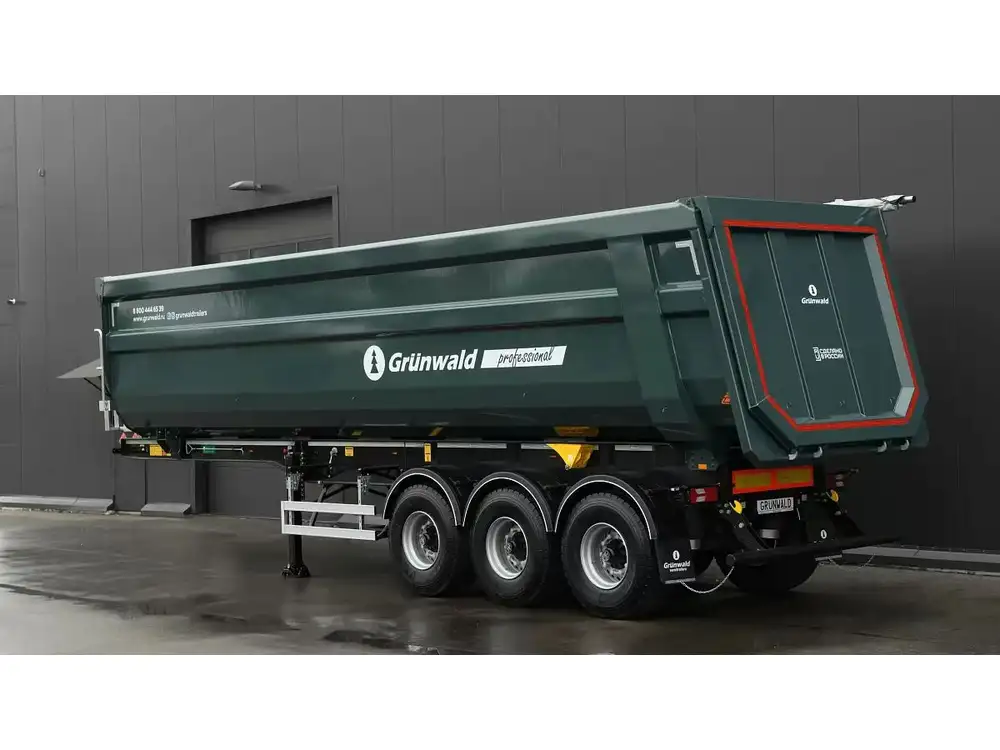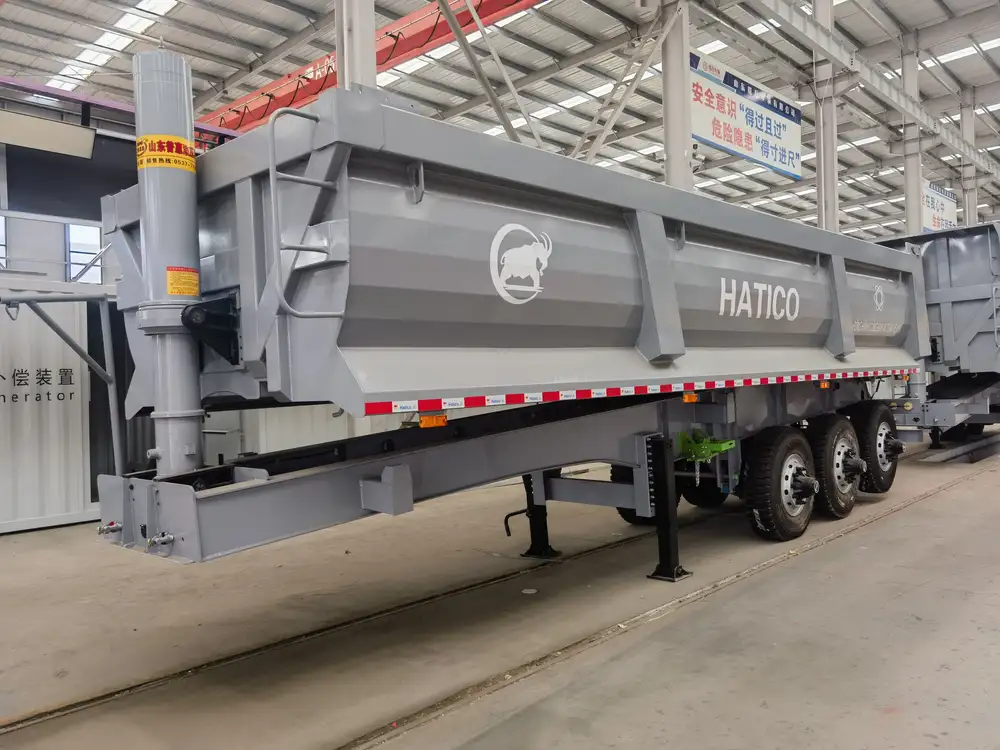In the expansive realm of logistics and transportation, the semi-trailer plays a pivotal role in the efficient movement of goods. This article delves into the intriguing world of semi-trailer lengths—especially the longest semi-trailers allowed on roads today. We aim to provide insight not just into the measurements, but also the implications for manufacturers, transport companies, and regulations that govern this essential industry.
Understanding Semi-Trailer Dimensions
What Constitutes a Semi-Trailer?
A semi-trailer is defined as a non-motorized trailer that attaches to a truck’s tractor unit, leaving part of the trailer’s weight on the truck’s wheels. Given their versatility and ability to carry substantial payloads, semi-trailers come in various lengths and designs, tailored to accommodate unique cargo requirements.

Typical Lengths for Semi-Trailers
In the United States, traditional semi-trailers are generally within 48 to 53 feet in length. However, this is just the tip of the iceberg. Various factors influence trailer length, including:
- Type of Cargo: Different goods require different trailer configurations.
- Local Regulations: Laws governing trailer length can vary widely from one state to another.
- Transport Needs: Strategic operational decisions may necessitate longer trailers for efficiency.
Table: Typical Semi-Trailer Lengths by Type
| Semi-Trailer Type | Typical Length (Feet) |
|---|---|
| Standard Flatbed | 48 – 53 |
| Refrigerated (Reefer) | 48 – 53 |
| Lowboy Trailer | 50 – 60 |
| Extendable Flatbed | 48 – 80 |
| Double-Drop Flatbed | 48 – 53 |
The Quest for Maximum Length: The Longest Semi-Trailer
When discussing the longest semi-trailer, the dimensions can stretch well beyond the conventional limits. We explore several types that push the boundaries of semi-trailer lengths.

The Long Combination Vehicle (LCV)
One of the best examples of extended semi-trailer configurations is the Long Combination Vehicle (LCV). These vehicles can measure up to 120 feet or more in total length, combining multiple trailers into one operational unit. While LCVs are championed for their load capacity efficiency, they are primarily allowed under specific conditions and jurisdictions due to regulatory constraints.
Regulations Governing Lengths of Semi-Trailers
Federal and State Regulations
In the United States, the federal maximum allowable length for a semi-trailer without special permits is 53 feet. However, individual states have their own rules. For example, states such as California permit specific configurations that can exceed the national limits.
- Interstate Commerce Regulations: Generally govern the lengths and weights for interstate travel.
- State Specifics: States like Texas and Wisconsin have provisions that allow longer trailers, particularly for agricultural and certain industrial loads.

Special Permits for Overlength Trailers
For those looking to utilize trailers that exceed the standard limits, obtaining a special permit is often necessary. These permits are often issued under stringent conditions, ensuring safety and compliance with physical road structure limits.
The Dynamics of Weight Distribution and Stability
In tandem with length, the distribution of weight becomes essential, especially as trailers extend. Long semi-trailers must consider:
- Load Distribution: Ensuring weight is evenly distributed to prevent accidents and maintain traction.
- Stability in Turns: Longer trailers require higher turning radiuses, affecting route planning.
- Braking Dynamics: The increased weight and length require enhanced braking systems to maintain safety.
Considerations for Manufacturers and Fleet Operators

Impact of Length on Manufacturing
For manufacturers, understanding how the length impacts design and engineering processes is crucial. Longer semi-trailers require:
- Stronger Frame Designs: To accommodate the increased stresses of hauling heavy loads.
- Advanced Suspension Systems: For better handling and stability during transport.
- Compliance Checks: Regular audits to ensure adherence to safety standards and regulatory mandates.
Strategies for Fleet Optimization
Fleet operators can take several steps to maximize efficiency when utilizing longer trailers:
- Route Planning: Using software solutions for optimized route mapping.
- Training Drivers: Ensuring drivers are trained in handling longer trailers, especially when it comes to parking and maneuvering.
- Regular Maintenance: Instituting maintenance schedules that account for the unique needs of longer trailers.
Advantages of Utilizing Long Semi-Trailers

Increased Payload Efficiency
A significant advantage of utilizing larger semi-trailers is the enhanced payload efficiency they offer. By transporting larger loads, logistics providers can reduce the number of trips necessary, translating to:
- Cost Savings: Lower fuel and labor costs per ton transported.
- Environmental Benefits: Reduced carbon footprint due to fewer trips.
Improved Supply Chain Management
Longer semi-trailers streamline supply chain processes:
- Faster Shipments: They allow for more products to be delivered in a single trip, reducing delays.
- Flexibility in Cargo Handling: The ability to carry larger or bulkier items without the need for additional vehicles.
Challenges and Considerations for Longer Trailers
However, the benefits of longer trailers come hand-in-hand with challenges that must be addressed effectively.

Increased Complexity in Logistics
Managing longer trailers introduces complexities:
- Increased Road Usage: Traffic congestion can worsen as longer trailers require more space on the road.
- Restrictions on Certain Roads: Not all roads can accommodate longer vehicles, necessitating pre-planned routes.
Liability and Insurance Implications
With greater load capacities, longer trailers present elevated risks, leading to:
- Higher Insurance Premiums: Insurers consider the increased risk associated with longer loads.
- Liability Issues: Greater potential for accidents or damage necessitates strong liability coverage.
Future Trends in Semi-Trailer Lengths

Innovations in Design
The future of semi-trailers promises advancements in design that can accommodate longer lengths while mitigating the associated risks. Technologies include:
- Lightweight Materials: Utilizing composites to reduce trailer weight while allowing longer lengths.
- Smart Trailers: Equipping trailers with GPS, weight sensors, and real-time tracking to enhance safety.
Legislative Changes
As transportation needs evolve, potential legislative shifts could redefine the standards for semi-trailer lengths:
- Expanded LCV Implementations: With proven safety records, we may see more states easing restrictions on longer vehicle configurations.
- Green Transportation Initiatives: As part of effectiveness goals, legislative supports for longer trailers could drive efficiencies to reduce vehicle emissions.
Conclusion
The exploration of semi-trailer lengths, particularly the longest semi-trailers, reveals a landscape rich with opportunities, challenges, and evolving regulations. From compliance considerations for manufacturers to strategic advantages for fleet operators, understanding these dynamics is fundamental for success in the logistics sector. As we look towards the future, innovations in design and adaptations in legislation will redefine trailer use, pushing the limits of what’s possible in cargo transport. By comprehensively examining the length and operational implications of semi-trailers, stakeholders can effectively navigate this intricate terrain, optimizing efficiency and safety in their logistics operations.

FAQs About Long Semi-Trailers
What is the maximum legal length for a semi-trailer?
In the U.S., the maximum length without a special permit is typically 53 feet. Long Combination Vehicles can extend beyond this length under specific regulations.Do longer trailers result in higher insurance costs?
Generally, yes, due to the increased risk associated with transporting larger loads.What types of semi-trailers can exceed 53 feet?
Long Combination Vehicles (LCVs), double-decker trailers, and some specialized freight trailers can exceed standard lengths, contingent on local regulations.Are there specific routes for long semi-trailers?
Yes, due to their size and weight, longer trailers may have restrictions on certain roads and require planning for suitable routes.What benefits do long semi-trailers provide to logistics companies?
They enhance payload efficiency, reduce the number of trips needed, and can streamline operations, ultimately leading to cost savings.
By comprehending the nuanced realities of trailer lengths, the transport industry can position itself for smarter, more effective logistics solutions in an increasingly demanding marketplace.



